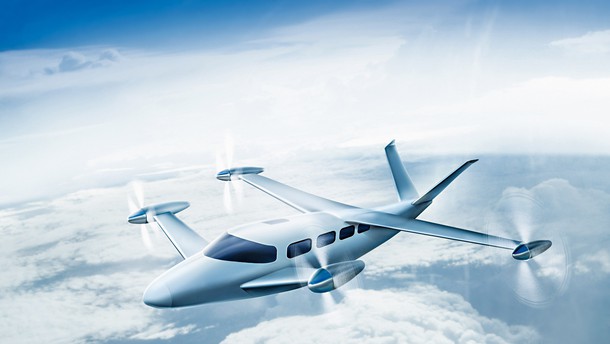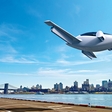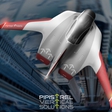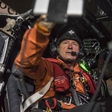
In seven years, the long-awaited project will finally be a reality. For now, it will continue to grow through ever-larger scale models, but Diamond Aircraft, the Austrian aircraft manufacturer that introduced the diesel engine to aviation, already knows the specifics of their future six-seater plane, that will star a hybrid powertrain and design. It will take off and land like a helicopter, but fly like an airplane.
Vertically up and down
Placement in the VTOL (Vertical Take-Off and Landing) category is another sign of the hybrid future of Diamond, which brings together the best capabilities of helicopters and airplanes. Parallels may be drawn with the car world. Like the French PSA Peugeot Citroen group, the Diamond's drive, for the first time, combines diesel with an electric motor. Most details have yet to be released, but as the company disclosed to Flying Magazine, the project is a collaboration with an as-yet-unnamed partner, supposedly high-profile in the industry. Christian Dries, founder and CEO of Diamond, revealed that the flight is powered by four engines and four propellers. The electric motors will be built by Siemens, and the diesel engines by Austro Diesel from Austria, which is owned by Diamond.

A diesel-electric hybrid is environmentally-friendly, of course, especially since energy can be regenerated, charging the batteries as you fly. That means that electricity will probably serve as the primary power for take-off and landing, the phases in which higher fuel consumption is necessary, along with more emissions and noise, which the six-seater will easily avoid. Carrying up to six passengers and with a total weight of 3000 kg, the plane will be able to perform regular take-offs and landings at a traditional airport. Dries got us even more excited as he described take-off and landing as fully-computerized and controlled: because vertical flight, with the propellers turned from vertical to the horizontal positions, will not be possible for more than six or seven minutes, due to battery power restrictions, the lasers will closely monitor the landing, traversing terrain in milliseconds to verify if it is suitable to bring the plane down safely.
The fact that the Diamond team will leave the most critical moments of flight in the hands of technology suggests that the hybrid six-seater may not actually need a pilot, though Dries has not (yet) confirmed this. Next to the booming development of autonomous driving in cars, that would introduce the concept to the world of aviation. For decades, planes have relied on autonomous flying once the aircraft is airborne, but to automate take-off and landing adds a new dimension which may not be well-received among pilots.
A well-known formula or a new turbo-diesel?
Starting with its design, Diamond is devising a new model, almost comparable in size to the current largest and most prestigious in its range of single and twin-engine aircrafts, the model DA62. The modern and luxurious seven-seat cabin (2-3-2) is said to be comparable in size to a high-end SUV, which confirms Diamond's relationship to the automotive industry. It is expected that the new model, with common rail fuel injection technology, will be powered by 2-liter turbo-diesel engines with 132 kW (180 hp) maximum output (factory code AE 330). But it will be seven years before the as-yet-unnamed turbo-diesel model is presented, so there will surely be some changes.

At the end of last year, the basic scheme that was thus far committed to paper, finally moved into the construction phase, building an approximately 330 kg unmanned model, which will be followed by a 1270 kg prototype adapted for a pilot. Only later will a production version follow, with a fly-by-wire control system, meaning that flying commands are made mechanically.
Given that, in the world of aviation, Safety is always written with a capital S (these days, followed by Ecology with a capital E), the new aircraft will be fitted with a parachute from the US firm BRS, which will deploy in the event of engine failure or other technical problems, allowing for the safe landing of a short winged and V-shape-tailed aircraft.
Interestingly, despite a number of revealed details, the firm hasn't yet come forward with the materials that will be used for construction. For some time, steel has given way to lighter and more robust composites, still the weight will require lots of tackling, especially because batteries that are a tenacious enemy when it comes to keeping aircraft light. Considering that the DA62, with one extra seat, falls into the category of 1999 kg maximum take-off weight, this unnamed new aircraft (which will fall into the segment of up to three tons) suggests that exceptional savings in the overall weight of the aircraft is unlikely to be in the cards.



